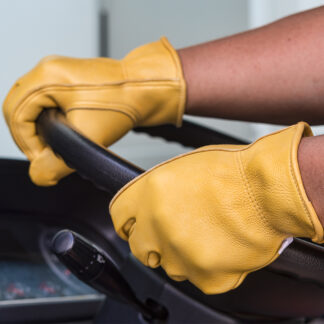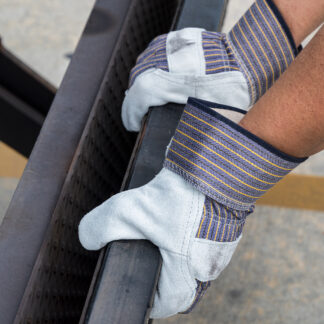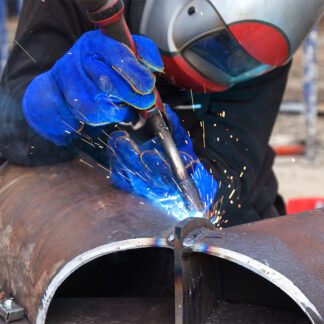Leather Gloves
Liberty Safety has been providing quality leather-made gloves for decades, and it continues to be one of our top sellers. Because leather is such a durable and reliable material, you can count on it to provide consistent protection. Our leather gloves are known to protect workers across a multitude of industries and for many uses. We offer a large selection of leather work glove styles and have gained a reputation for knowing which leather material is best for any given…
Liberty Safety has been providing quality leather-made gloves for decades, and it continues to be one of our top sellers. Because leather is such a durable and reliable material, you can count on it to provide consistent protection.
Our leather gloves are known to protect workers across a multitude of industries and for many uses. We offer a large selection of leather work glove styles and have gained a reputation for knowing which leather material is best for any given application.
FAQ
The natural animal fibers and the aging involved in the tanning process make for a tough but flexible glove. It’s also why the fit improves over time as it “learns” the contours of your hand. That and the fact they protect your hands when used for a huge variety of jobs make leather gloves a natural choice for most workers.
Leather hand protection is offered in cowhide, goat, deerskin, or pig leathers. Even though cowhide is the most popular in the industry, pigskin has higher abrasion resistance and excellent air circulation qualities and retains its flexibility when wet.
Goatskin offers resistance to abrasion and high tensile strength. The high lanolin content means it’s exceptionally soft too. Deerskin offers agility with strength and is especially soft as well.
Leather Type

- Cowhide: most popular, cost-effective, abrasion-resistant, durable, and heat resistant
- Pigskin: soft, flexible, does not harden, breathable
- Deerskin: very soft, supple, comfortable, and lightweight
- Goatskin: high tensile strength, abrasion resistant, smooth, and flexible
- Synthetic: weather-resistant, comfortable, lightweight
Types of Cuts for Cow Leather
- Side split: most durable and provides the most significant protection.
- Shoulder split: Great economic option but slightly weaker than a side split.
- Belly split: Even better economically but may have some inconsistent texture and appearance
Our selection of leather hand protection offers a variety of styles:
Driver gloves incorporate slip-on configuration for ease of donning and available with a straight, wing, or keystone thumb.
Leather palm gloves range in full-featured safety cuff, knit wrist, or gauntlet cuff for more protection.
Double palm gloves feature a reinforced palm area for an added protection and longer wear. Kevlar® sewn thread provides additional strength and seam abrasion resistance when used for certain styles. Another popular style option is our cotton canvas on the back of leather palm gloves that adds extra air circulation.
Lined gloves have jersey piled, or 3M™ Thinsulate™ which can be used if the job requires insulation for additional protection from cold weather.
Work that exposes your hands to higher temperatures that can burn often requires a type of leather glove. For example, leather gloves are often used when welding because leather protects from sparks and moderate heat.
The thickness and durability of leather minimize the possibility of getting cuts and abrasions when that may occur. For even more protection, LGS also offers mechanic gloves and impact-resistant gloves with leather properties.
You’ll find leather gloves used for the following:
| Welding | Industrial | Manufacturing |
| Automotive work | Construction | Security & policing |
| Sporting events | Outdoor work | Driving |





